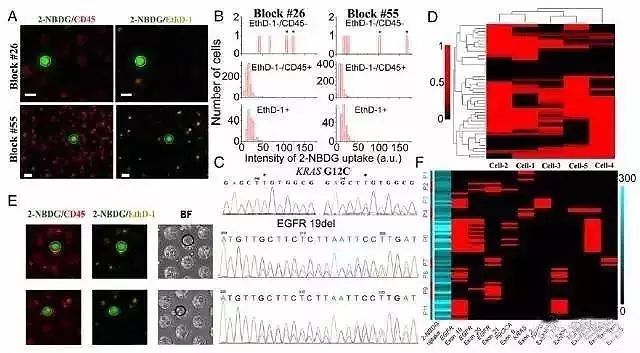PNAS: A new method for tumor cell identification
- Why Botulinum Toxin Reigns as One of the Deadliest Poisons?
- FDA Approves Pfizer’s One-Time Gene Therapy for Hemophilia B: $3.5 Million per Dose
- Aspirin: Study Finds Greater Benefits for These Colorectal Cancer Patients
- Cancer Can Occur Without Genetic Mutations?
- Statins Lower Blood Lipids: How Long is a Course?
- Warning: Smartwatch Blood Sugar Measurement Deemed Dangerous
PNAS: A new method for tumor cell identification
PNAS: A new method for tumor cell identification. Malignant tumors are often accompanied by tumor cells entering body fluids, such as blood, pleural and ascites, and cerebrospinal fluid during the process of dissemination, invasion, and metastasis.

The Proceedings of the National Academy of Sciences (PNAS) published the research results of Professor Lu Shun’s team, Shanghai Jiaotong University Institute of System Biomedicine and UCLA School of Medicine: “High-throughput screening of rare metabolically active tumor cells in pleural effusion and Peripheral blood of lung cancer patients (“Detecting a small number of active tumor cells by high-throughput sequencing in the pleural fluid and peripheral blood of lung cancer patients”)”.
This research has developed a new method for high-throughput and rapid identification of tumor cells in pleural fluid, blood and other fluid samples, and confirmed its reliability through a large number of single-cell sequencing, providing a method for identifying malignant cells in complex body fluid samples. New ideas for cells.
Malignant tumors are often accompanied by tumor cells entering body fluids, such as blood, pleural and ascites, and cerebrospinal fluid during the process of dissemination, invasion, and metastasis. Therefore, finding tumor cells in these body fluid samples is an effective evidence for judging the existence of tumors and even metastasis. However, these body fluid samples contain a variety of cells and the number of tumor cells is often small, which brings challenges to clinical testing. At present, the identification of exfoliated tumor cells in body fluid samples mainly relies on cytological examination, which is time-consuming and laborious and has high professional requirements. Many of the identified cells have lost their activity, which is not convenient for later research.

This new research method utilizes the basic characteristics of abnormal energy metabolism of tumor cells to quickly and easily detect suspected tumor cells with high metabolic activity in pleural fluid samples. All cells are screened through a chip containing 200,000 micropores. Since tumor cells have a different energy metabolism pathway from normal cells, the use of fluorescent markers can quickly find suspected tumor cells with particularly high metabolic values, which is equivalent to PET-CT was done once for each cell.
For further verification, these suspected tumor cells were taken out one by one for single-cell sequencing. The experimental results showed that for the pleural fluid samples of lung adenocarcinoma patients, more than 60% of the suspected tumor cells reflected the cellular characteristics of the tumor cells in situ. At the same time, in some samples that are negative or undiagnosed by traditional cytology, this method can effectively find tumor cells and confirm them by sequencing. In addition, this identification method does not damage cell viability, and the probability of missing malignant cells is relatively small.

For the majority of cancer patients, this new research method will undoubtedly bring good news. Liquid biopsy not only can quickly identify malignant pleural effusion, but also can be used to detect circulating tumor cells in blood samples.
In other words, patients no longer need to experience the pain of repeated punctures, and only need to draw blood and other minor traumas to screen out highly active tumor cells. By observing the changes in the cells, doctors can further choose and confirm treatment methods. , Evaluation of drug effects, etc.
Especially for the immunotherapy of patients with advanced tumors, this detection method can dynamically distinguish genetic changes and drug efficacy, so as to adjust and select more suitable treatment methods for patients in time.
(sourcechinanet, reference only)
Disclaimer of medicaltrend.org



